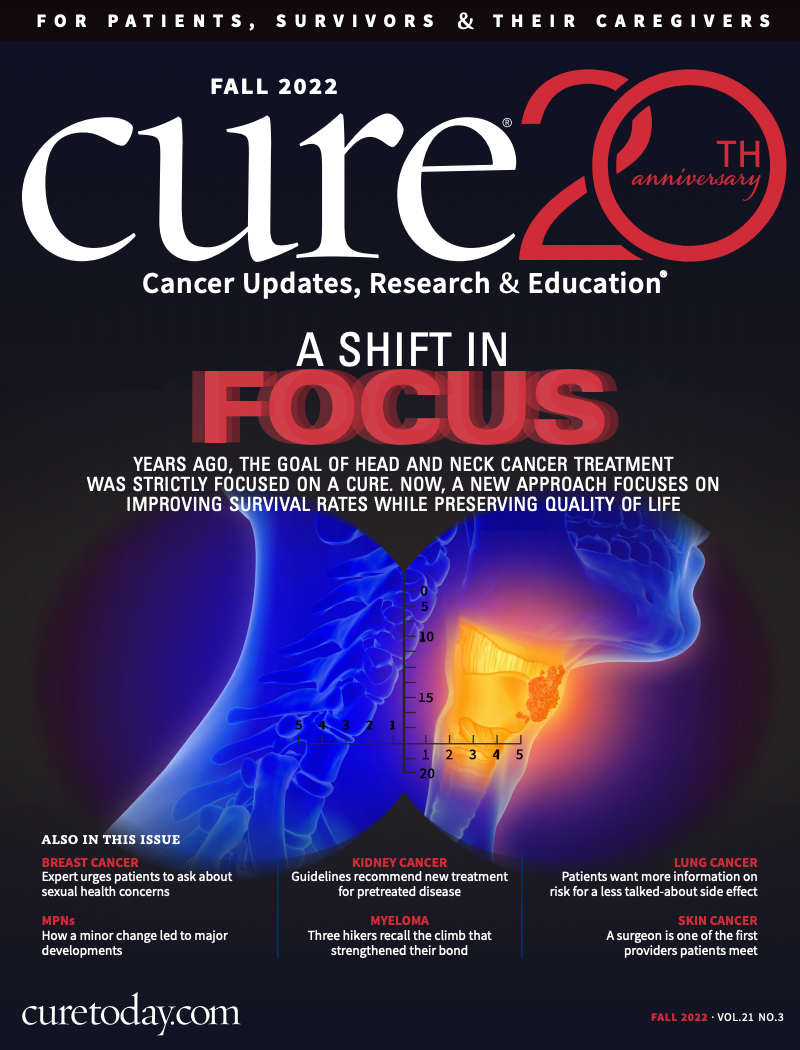Publication
Article
CURE
There Shouldn’t Be a First Class and Economy Class When It Comes to Life-Saving Cancer Treatments
Author(s):
I can’t imagine my daughter not getting important cancer treatments because we could not afford it or because insurance denied it. Unfortunately, that is the situation for many patients.
I can’t imagine my daughter not getting important cancer treatments because we could not afford it or because insurance denied it. Unfortunately, that is the situation for many patients.
One of the things that triggers my Spidey-sense these days is all the new developments in cancer treatments and medications that help with side effects. When my daughter was diagnosed with breast cancer in 2019, the standard of care had changed for HER2-positive patients with the addition of Herceptin (trastuzumab), a medication that blocks the ability of the cancer cells to receive chemical signals that tell the cells to grow.
To help with chemotherapy-induced nausea, she was prescribed Emend (aprepitant), and although it has been approved for use for 20 years, it was new to me.
These days, I scour articles that speak to advancements in treating metastatic breast cancer because although my daughter is currently NED, or no evidence of disease, I know that we are one scan away from that changing and I want to be ready — list in hand — if we are ever in an oncologist’s office again.
I recently listened to an audiobook by Cindy McCain and in it I learned that John McCain, an American hero, long-term senator and former presidential candidate, was initially denied his recommended chemotherapy drug by his insurance company. Mrs. McCain had to threaten to take her large family corporation’s business away from the company to force them to back down and authorize the prescribed regimen. The first thought that came to mind for me was if someone like John McCain could be denied, what hope does your average Joe or Jane have when the cost-benefit analysis suggests that saying yes will be more than the patient is worth?
In my naivety, I thought that all patients with cancer had access to the same medications as my child received, but I have learned in the past three years that this is far from the truth. What is also true is that breakthrough treatments that are available in one country are not necessarily available in another.
I can’t imagine knowing that there was a drug out there that could help kill the beast or help my girl keep food down and she could not get it because someone in an office somewhere decides she can’t. I also can’t imagine being on the other end of a phone conversation having to listen to the tears and outrage when my job means I must tell someone with cancer or their loved one that although a medication might be the only chance at life, if they can’t afford to pay for it on their own there is nothing I can do.
There shouldn’t be a first class and economy class when it comes to life-saving treatments. Whether or not I have been lucky enough to accumulate wealth or power should not determine if I am able to travel down all the available paths to potential wellness when others are forced to take a different fork in the road.
There is something desperately wrong with a system that looks at dollar signs as a factor in determining the value of a human being and if they deserve every chance at seeing their children grow up.
I acknowledge that research and development of new medications is expensive. I understand the rationale behind a company needing to recoup their investment in the process. I am not sure what the answer is to solve this particular puzzle. What I am sure of is how it works right now is mind-numbingly unfair and terrifying for anyone who sits in a doctor’s office and hears the words “It’s cancer,” if they don’t have the means or coverage to say yes to the plan to save them.
All I know is that if the day ever comes that money comes between me and my child’s life being saved, you may see a few organs on the black market all of a sudden.Just sayin’…
For more news on cancer updates, research and education, don’t forget to subscribe to CURE®’s newsletters here.




